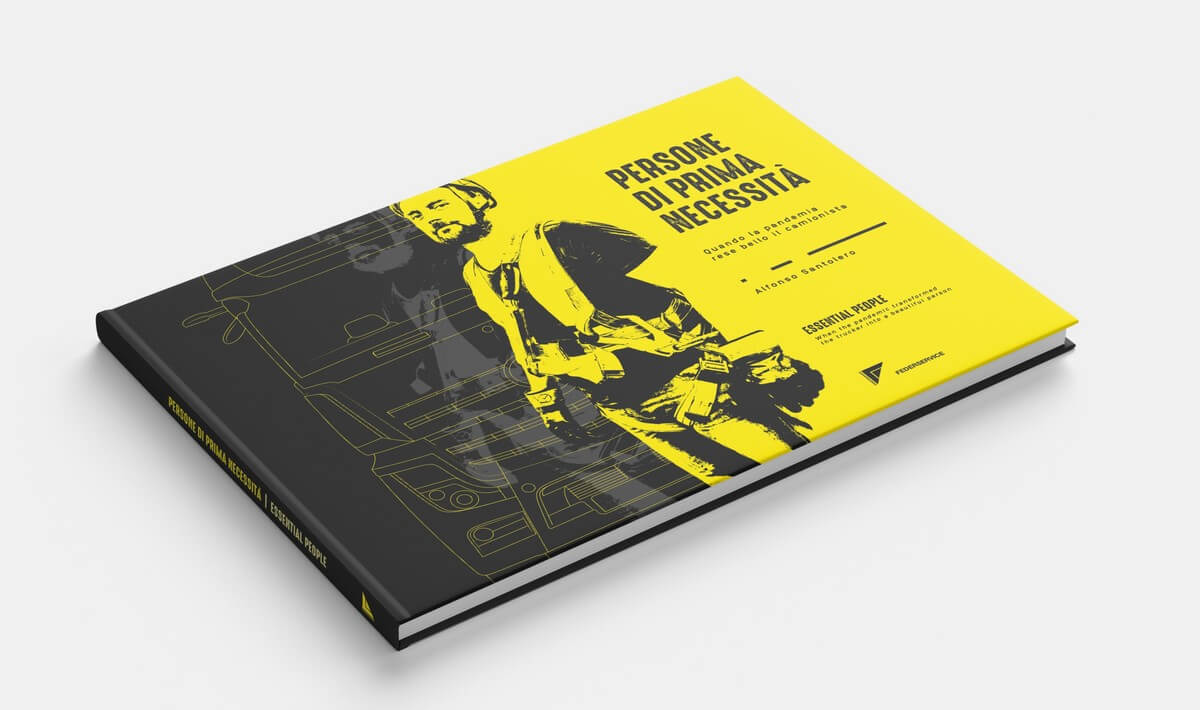At the end of last month, Italian road transport group Uomini e Trasporti released the book ‘Essential people. How the pandemic turned the truck driver into a beautiful person’.
The book, which includes photographs taken by Alfonso Santolero, was conceived and published with two clear objectives.
The first was to record, through photo documentation, the extraordinary efforts of truck drivers who worked during the pandemic. The second aim was to remind people of lorry drivers’ essential role in the smooth running of the economy.
The images depict real situations that reflect the efforts made by truck drivers and their suffering brought on by loneliness, fear, worry and uncertainty concerned with their jobs.

To find out more on the book, Trans.INFO spoke to Gennaro Speranza from Uomini e Transporti.
The journalist and photographer also shared his thoughts about the main problems currently faced by truck drivers, and the haulage industry as a whole.
Your recent book aims to remind people of the essential role truck drivers play in the economy, a role that is often forgotten. Where did the idea come from?
The idea come from our magazine’s publisher, Federservice, an italian service company of the Federtrasporti Group, a national association that today includes about 50 road haulage companies. It was founded in 1971 to provide economic protection to its associates.
In particular, the book was created based on the idea of the president of Federtrasporti, Claudio Villa, who, after the success of our previous book “Bello come un camion” (Beautiful like a truck), proposed to make “Bello come un camionista” (Beautiful like a trucker).
The pandemic has shown the beauty of these “Essential People” who have made it possible for everyone to have all kinds of goods at their disposal at all times, continuing to carry out their work regularly but with the additional burden of all the difficulties caused by the virus.
Did you go out into the field specifically with drivers during the pandemic? If so, what was the most striking thing you noticed about their day-to-day work?
I didn’t go personally into the field, but our photographer Alfonso Santolero did. I can tell you what he wrote about this in the book’s introduction.
He said that when writing and photographing for a book like this, one in which the camera must be used on the road, entering companies and places where work is going on can be extremely complicated.
Indeed, this book would never have been published without the spontaneous and often enthusiastic collaboration of so many people, all of whom were extremely helpful in opening a door to their working lives and enabling us to cross barriers with courtesy and respect. This is what impressed us the most.
What does social sustainability and human-centric approach in the transport sector mean to you?
I think that the world of transport is made up firstly of people who unfortunately still a negative public image.
They are perceived as people who pollute and clutter, who gorge themselves excessively and put the safety of those who they share the road with, at risk.
Perhaps this is why so many young people stay away from this job. We need to work on fighting these stereotypes. Only in this way can we seriously talk about social sustainability and give the right value to human capital of these people.
Your book touches upon a very sensitive spot for long haul drivers; their loneliness and homesickness. Why do you think that, in spite of all the sacrifices and the hardship, these people continue to choose to show up for their job every day?
Because they have shown that there is always a “road” along which one keeps travelling, even when everything seems hopelessly still.
Because not even a complex experience like Covid-19 has affected the determination of truckers to react, their spirit of resilience or battling character. This is why they deserve an enormous “thank you”.
What were the nationalities of the drivers you interacted with? Can you share some of the stories that have touched you the most throughout this project?
The nationalities of the drivers was predominantly Italian. The one story that touched me the most was that of Francesco, a 44-year-old from Venice.
He has been with CAM (a transport cooperative) for six years transporting tanks full of fuel, after working as a baker.
He told me that it was only during lockdown that he realized the leitmotiv of his work. And he explained it proudly to his daughter: “Dad supplies people with what they need most”.
What are your thoughts on the current working conditions of professional drivers in Europe? What are the main pain-points you believe the authorities should focus on fixing?
Road transport is experiencing one of the most fragile moments in its history.
The focus should be fixed on measures to reduce the economic and social impact of high fuel prices, but – as I said before – it is also important to invest in the image of the sector, starting already in the training phase, working on specific professional study courses for transport and logistics.
A concrete action to be promoted must also be that which concerns the creation of safe and secure truck parking areas, because their shortage and the low standard of services contribute to keeping young people away from a profession that, at least in part, takes place within those spaces.









